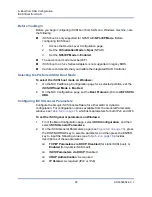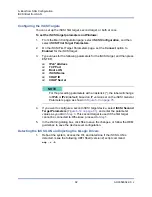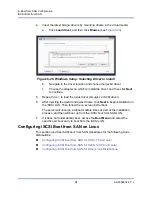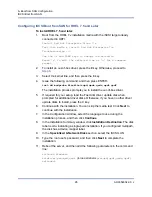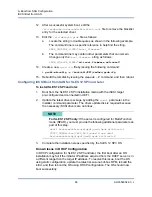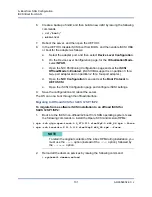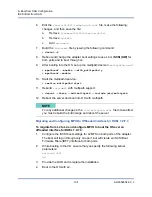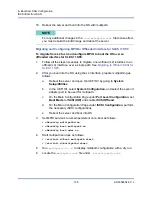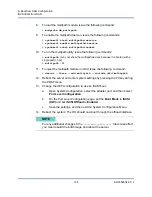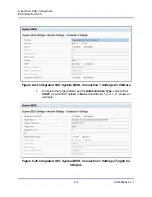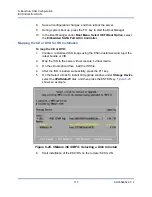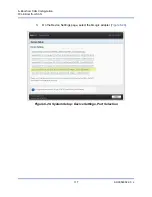
6–Boot from SAN Configuration
iSCSI Boot from SAN
103
AH0054602-00 J
c.
Open the NIC Partitioning Configuration page and set the
iSCSI
Offload Mode
to
Enabled
. (iSCSI HBA support is on partition 3 for a
two--port adapter and on partition 2 for a four-port adapter.)
d.
Open the
NIC Configuration
menu and set the
Boot Protocol
to
UEFI iSCSI
.
e.
Open the iSCSI Configuration page and configure iSCSI settings.
14. Save the configuration and reboot the server.
The OS can now boot through the offload interface.
Linux Multipath Considerations
iSCSI boot from SAN installations on Linux operating systems are currently
supported only in a single-path configuration. To enable multipath configurations,
perform the installation in a single path, using either an L2 or L4 path. After the
server boots into the installed operating system, perform the required
configurations for enabling multipath I/O (MPIO).
See the appropriate procedure in this section to migrate from L2 to L4 and
configure MPIO for your OS:
Migrating and Configuring MPIO to Offloaded Interface for RHEL 6.9/6.10
Migrating and Configuring MPIO to Offloaded Interface for SLES 11 SP4
Migrating and Configuring MPIO to Offloaded Interface for
SLES 12 SP1/SP2
Migrating and Configuring MPIO to Offloaded Interface for RHEL 6.9/6.10
To migrate from L2 to L4 and configure MPIO to boot the OS over an
offloaded interface for RHEL 6.9/6.10:
1.
Configure the iSCSI boot settings for L2 BFS on both ports of the adapter.
The boot will log in through only one port, but will create an iSCSI Boot
Firmware Table (iBFT) interface for both ports.
2.
While booting to the CD, ensure that you specify the following kernel
parameters:
ip=ibft
linux dd
3.
Provide the DUD and complete the installation.
4.
Boot to the OS with L2.
5.
Update Open-iSCSI tools and iscsiuio by issuing the following commands:
#
rpm -ivh qlgc-open-iscsi-2.0_873.111.rhel6u9-3.x86_64.rpm --force
#
rpm -ivh iscsiuio-2.11.5.5-6.rhel6u9.x86_64.rpm --force


